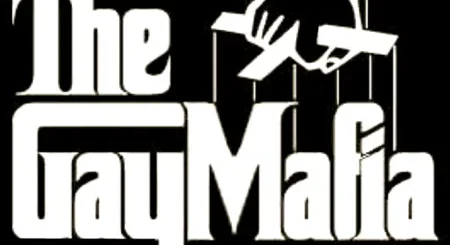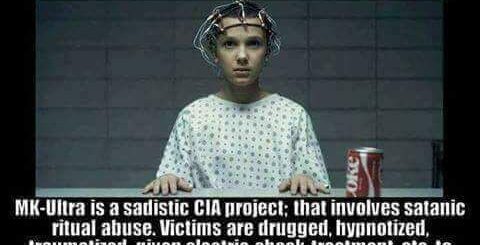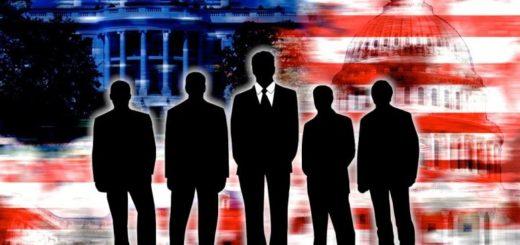CIA v. Sims, 471 U.S. 159 (1985) Protects CIA CHILD RAPISTS & Torturers For CIA
U.S. Supreme Court
CIA v. Sims, 471 U.S. 159 (1985)
Central Intelligence Agency v. Sims
No. 83-1075
Argued December 4, 1984
Decided April 16, 1985*
Syllabus
Between 1953 and 1966, the Central Intelligence Agency (CIA) financed a research project, code-named MKULTRA, that was established to counter Soviet and Chinese advances in brainwashing and interrogation techniques. Subprojects were contracted out to various universities, research foundations, and similar institutions. In 1977, respondents in No. 83-1075 (hereafter respondents) filed a request with the CIA under the Freedom of Information Act (FOIA), seeking, inter alia, the names of the institutions and individuals who had performed the research under MKULTRA. Citing Exemption 3 of the FOIA — which provides that an agency need not disclose
“matters that are . . . specifically exempted from disclosure by statute . . . provided that such statute . . . refers to particular types of matters to be withheld”
— the CIA declined to disclose the requested information. The CIA invoked, as the exempting statute referred to in Exemption 3, § 102(d)(3) of the National Security Act of 1947, which states that
“the Director of Central Intelligence shall be responsible for protecting intelligence sources and methods from unauthorized disclosure.”
Respondents then filed suit under the FOIA in Federal District Court. Applying, as directed by the Court of Appeals on an earlier appeal, a definition of “intelligence sources” as meaning only those sources to which the CIA had to guarantee confidentiality in order to obtain the information, the District Court held that the identities of researchers who had received express guarantees of confidentiality need not be disclosed, and also exempted from disclosure other researchers on the ground that their work for the CIA, apart from MKULTRA, required that their identities remain secret. The court further held that there was no need to disclose the institutional affiliations of the individual researchers whose identities were exempt from disclosure. The Court of Appeals affirmed this latter holding, but reversed the District Court’s ruling with respect to which individual researchers satisfied “the need-for-confidentiality” aspect of its formulation
of exempt “intelligence sources.” The Court of Appeals held that it was error automatically to exempt from disclosure those researchers to whom confidentiality had been promised, and that an individual qualifies as an “intelligence source” exempt from disclosure under the FOIA only when the CIA offers sufficient proof that it needs to protect its efforts in confidentiality in order to obtain the type of information provided by the researcher.
Held:
1. Section 102(d)(3) qualifies as a withholding statute under Exemption 3. Section 102(d)(3) clearly refers to “particular types of matters” within the meaning of Exemption 3. Moreover, the FOIA’s legislative history confirms that Congress intended § 102(d)(3) to be a withholding statute under that Exemption. And the plain meaning of § 102(d)(3)’s language, as well as the National Security Act’s legislative history, indicates that Congress vested in the Director of Central Intelligence broad authority to protect all sources of intelligence information from disclosure. To narrow this authority by limiting the definition of “intelligence sources” to sources to which the CIA had to guarantee confidentiality in order to obtain the information not only contravenes Congress’ express intention but also overlooks the practical necessities of modern intelligence gathering. Pp. 471 U. S. 166-173.
U.S. Supreme Court
CIA v. Sims, 471 U.S. 159 (1985)
Central Intelligence Agency v. Sims
No. 83-1075
Argued December 4, 1984
Decided April 16, 1985*
Syllabus
Between 1953 and 1966, the Central Intelligence Agency (CIA) financed a research project, code-named MKULTRA, that was established to counter Soviet and Chinese advances in brainwashing and interrogation techniques. Subprojects were contracted out to various universities, research foundations, and similar institutions. In 1977, respondents in No. 83-1075 (hereafter respondents) filed a request with the CIA under the Freedom of Information Act (FOIA), seeking, inter alia, the names of the institutions and individuals who had performed the research under MKULTRA. Citing Exemption 3 of the FOIA — which provides that an agency need not disclose
“matters that are . . . specifically exempted from disclosure by statute . . . provided that such statute . . . refers to particular types of matters to be withheld”
— the CIA declined to disclose the requested information. The CIA invoked, as the exempting statute referred to in Exemption 3, § 102(d)(3) of the National Security Act of 1947, which states that
“the Director of Central Intelligence shall be responsible for protecting intelligence sources and methods from unauthorized disclosure.”
Respondents then filed suit under the FOIA in Federal District Court. Applying, as directed by the Court of Appeals on an earlier appeal, a definition of “intelligence sources” as meaning only those sources to which the CIA had to guarantee confidentiality in order to obtain the information, the District Court held that the identities of researchers who had received express guarantees of confidentiality need not be disclosed, and also exempted from disclosure other researchers on the ground that their work for the CIA, apart from MKULTRA, required that their identities remain secret. The court further held that there was no need to disclose the institutional affiliations of the individual researchers whose identities were exempt from disclosure. The Court of Appeals affirmed this latter holding, but reversed the District Court’s ruling with respect to which individual researchers satisfied “the need-for-confidentiality” aspect of its formulation
of exempt “intelligence sources.” The Court of Appeals held that it was error automatically to exempt from disclosure those researchers to whom confidentiality had been promised, and that an individual qualifies as an “intelligence source” exempt from disclosure under the FOIA only when the CIA offers sufficient proof that it needs to protect its efforts in confidentiality in order to obtain the type of information provided by the researcher.
Held:
1. Section 102(d)(3) qualifies as a withholding statute under Exemption 3. Section 102(d)(3) clearly refers to “particular types of matters” within the meaning of Exemption 3. Moreover, the FOIA’s legislative history confirms that Congress intended § 102(d)(3) to be a withholding statute under that Exemption. And the plain meaning of § 102(d)(3)’s language, as well as the National Security Act’s legislative history, indicates that Congress vested in the Director of Central Intelligence broad authority to protect all sources of intelligence information from disclosure. To narrow this authority by limiting the definition of “intelligence sources” to sources to which the CIA had to guarantee confidentiality in order to obtain the information not only contravenes Congress’ express intention but also overlooks the practical necessities of modern intelligence gathering. Pp. 471 U. S. 166-173.
2. MKULTRA researchers are protected “intelligence sources” within § 102(d)(3)’s broad meaning, because they provided, or were engaged to provide, information that the CIA needed to fulfill its statutory obligations with respect to foreign intelligence. To force the CIA to disclose a source whenever a court determines, after the fact, that the CIA could have obtained the kind of information supplied without promising confidentiality, could have a devastating impact on the CIA’s ability to carry out its statutory mission. The record establishes that the MKULTRA researchers did in fact provide the CIA with information related to its intelligence function, and therefore the Director was authorized to withhold these researchers’ identities from disclosure under the FOIA. Pp. 471 U. S. 173-177.
3. The FOIA does not require the Director to disclose the institutional affiliations of the exempt researchers. This conclusion is supported by the record. The Director reasonably concluded that an observer who is knowledgeable about a particular intelligence research project, such as MKULTRA, could, upon learning that the research was performed at a certain institution, deduce the identities of the protected individual researchers. Pp. 471 U. S. 177-181.
228 U.S.App.D.C. 269, 709 F.2d 95, affirmed in part and reversed in part.
BURGER, C.J., delivered the opinion of the Court, in which WHITE, BLACKMUN, POWELL, REHNQUIST, STEVENS, and O’CONNOR, JJ., joined. MARSHALL, J., filed an opinion concurring in the result, in which BRENNAN, J., joined, post, p. 471 U. S. 181.
Comment: What this means is victims of rape, torture and attempted murder cannot sue these “researchers” for ‘reasons of National Security.’ The researchers using these sex slaves for personal gratification get a free pass and believe me they DO use these female slaves for sexual gratification for ‘fun.’ They also do Kinsey type of stuff like tying/binding slaves up and sexually stimulating them while having the slaves watch sadistic pornography & torture to train the slaves to get off on watching others being tortured. Anybody wonder why we have an explosion in rape and pedophilia? Due to Massive Censorship (Nat’l Security Act) and Criminals Owning Our Media the Public Doesn’t Even Know About This!
https://thesenatorhillary.blogspot.com/
All the information on the Home Page of above blog is relevant including the 90 page CIA information at the bottom of the page.
UTHOR INTERVIEWS
The CIA’s Secret Quest For Mind Control: Torture, LSD And A ‘Poisoner In Chief’
September 9, 20192:50 PM ETHeard on Fresh Air


LISTEN·37:3637-Minute ListenAdd toPLAYLIST
- Download
- Embed
- Transcript

Enlarge this image
CIA chemist Sidney Gottlieb headed up the agency’s secret MK-ULTRA program, which was charged with developing a mind control drug that could be weaponized against enemies.Courtesy of the CIA
During the early period of the Cold War, the CIA became convinced that communists had discovered a drug or technique that would allow them to control human minds. In response, the CIA began its own secret program, called MK-ULTRA, to search for a mind control drug that could be weaponized against enemies.
MK-ULTRA, which operated from the 1950s until the early ’60s, was created and run by a chemist named Sidney Gottlieb. Journalist Stephen Kinzer, who spent several years investigating the program, calls the operation the “most sustained search in history for techniques of mind control.”
Some of Gottlieb’s experiments were covertly funded at universities and research centers, Kinzer says, while others were conducted in American prisons and in detention centers in Japan, Germany and the Philippines. Many of his unwitting subjects endured psychological torture ranging from electroshock to high doses of LSD, according to Kinzer’s research.
“Gottlieb wanted to create a way to seize control of people’s minds, and he realized it was a two-part process,” Kinzer says. “First, you had to blast away the existing mind. Second, you had to find a way to insert a new mind into that resulting void. We didn’t get too far on number two, but he did a lot of work on number one.”

THE PICTURE SHOW
Found In The Archives: Military LSD Testing
Kinzer notes that the top-secret nature of Gottlieb’s work makes it impossible to measure the human cost of his experiments. “We don’t know how many people died, but a number did, and many lives were permanently destroyed,” he says.
Ultimately, Gottlieb concluded that mind control was not possible. After MK-ULTRA shut down, he went on to lead a CIA program that created poisons and high-tech gadgets for spies to use.
Kinzer writes about Gottlieb and MK-ULTRA in his new book, Poisoner in Chief.
Interview highlights

Poisoner in Chief
Sidney Gottlieb and the CIA Search for Mind Control
Hardcover, 354 pagespurchase
On how the CIA brought LSD to America
As part of the search for drugs that would allow people to control the human mind, CIA scientists became aware of the existence of LSD, and this became an obsession for the early directors of MK-ULTRA. Actually, the MK-ULTRA director, Sidney Gottlieb, can now be seen as the man who brought LSD to America. He was the unwitting godfather of the entire LSD counterculture.
In the early 1950s, he arranged for the CIA to pay $240,000 to buy the world’s entire supply of LSD. He brought this to the United States, and he began spreading it around to hospitals, clinics, prisons and other institutions, asking them, through bogus foundations, to carry out research projects and find out what LSD was, how people reacted to it and how it might be able to be used as a tool for mind control.
Now, the people who volunteered for these experiments and began taking LSD, in many cases, found it very pleasurable. They told their friends about it. Who were those people? Ken Kesey, the author of One Flew Over the Cuckoo’s Nest, got his LSD in an experiment sponsored by the CIA by MK-ULTRA, by Sidney Gottlieb. So did Robert Hunter, the lyricist for the Grateful Dead, which went on to become a great purveyor of LSD culture. Allen Ginsberg, the poet who preached the value of the great personal adventure of using LSD, got his first LSD from Sidney Gottlieb. Although, of course, he never knew that name.
So the CIA brought LSD to America unwittingly, and actually it’s a tremendous irony that the drug that the CIA hoped would be its key to controlling humanity actually wound up fueling a generational rebellion that was dedicated to destroying everything that the CIA held dear and defended.
On how MK-ULTRA experimented on prisoners, including crime boss Whitey Bulger
Whitey Bulger was one of the prisoners who volunteered for what he was told was an experiment aimed at finding a cure for schizophrenia. As part of this experiment, he was given LSD every day for more than a year. He later realized that this had nothing to do with schizophrenia and he was a guinea pig in a government experiment aimed at seeing what people’s long-term reactions to LSD was. Essentially, could we make a person lose his mind by feeding him LSD every day over such a long period?

AUTHOR INTERVIEWS
Meet ‘The Brothers’ Who Shaped U.S. Policy, Inside And Out
Bulger wrote afterward about his experiences, which he described as quite horrific. He thought he was going insane. He wrote, “I was in prison for committing a crime, but they committed a greater crime on me.” And towards the end of his life, Bulger came to realize the truth of what had happened to him, and he actually told his friends that he was going to find that doctor in Atlanta who was the head of that experiment program in the penitentiary and go kill him.
On the CIA hiring Nazi doctors and Japanese torturers to learn methods
The CIA mind control project, MK-ULTRA, was essentially a continuation of work that began in Japanese and Nazi concentration camps.
Stephen Kinzer, author of ‘Poisoner in Chief’
The CIA mind control project, MK-ULTRA, was essentially a continuation of work that began in Japanese and Nazi concentration camps. Not only was it roughly based on those experiments, but the CIA actually hired the vivisectionists and the torturers who had worked in Japan and in Nazi concentration camps to come and explain what they had found out so that we could build on their research.
For example, Nazi doctors had conducted extensive experiments with mescaline at the Dachau concentration camp, and the CIA was very interested in figuring out whether mescaline could be the key to mind control that was one of their big avenues of investigation. So they hired the Nazi doctors who had been involved in that project to advise them.
Another thing the Nazis provided was information about poison gases like sarin, which is still being used. Nazi doctors came to America to Fort Detrick in Maryland, which was the center of this project, to lecture to CIA officers to tell them how long it took for people to die from sarin.
On the more extreme experiments Gottlieb conducted overseas
Gottlieb and the CIA established secret detention centers throughout Europe and East Asia, particularly in Japan, Germany and the Philippines, which were largely under American control in the period of the early ’50s, and therefore Gottlieb didn’t have to worry about any legal entanglements in these places. …
CIA officers in Europe and Asia were capturing enemy agents and others who they felt might be suspected persons or were otherwise what they called “expendable.” They would grab these people and throw them into cells and then test all kinds of, not just drug potions, but other techniques, like electroshock, extremes of temperature, sensory isolation — all the meantime bombarding them with questions, trying to see if they could break down resistance and find a way to destroy the human ego. So these were projects designed not only to understand the human mind but to figure out how to destroy it. And that made Gottlieb, although in some ways a very compassionate person, certainly the most prolific torturer of his generation.
On how these experiments were unsupervised
This guy [Sidney Gottlieb] had a license to kill. He was allowed to requisition human subjects across the United States and around the world and subject them to any kind of abuse that he wanted, even up to the level of it being fatal — yet nobody looked over his shoulder.
Stephen Kinzer
[Gottlieb] operated almost completely without supervision. He had sort of a checkoff from his titular boss and from his real boss, Richard Helms, and from the CIA director, Allen Dulles. But none of them really wanted to know what he was doing. This guy had a license to kill. He was allowed to requisition human subjects across the United States and around the world and subject them to any kind of abuse that he wanted, even up to the level of it being fatal — yet nobody looked over his shoulder. He never had to file serious reports to anybody. I think the mentality must have been [that] this project is so important — mind control, if it can be mastered, is the key to global world power.
On how Gottlieb destroyed evidence about his experiments when he left the CIA
The end of Gottlieb’s career came in [1973], when his patron, Richard Helms, who was then director of the CIA, was removed by [President Richard] Nixon. Once Helms was gone, it was just a matter of time until Gottlieb would be gone, and most important was that Helms was really the only person at the CIA who had an idea of what Gottlieb had been doing. So as they were both on their way out of the CIA, they agreed that they should destroy all records of MK-ULTRA. Gottlieb actually drove out to the CIA records center and ordered the archives to destroy boxes full of MK-ULTRA records. … However, it turns out that there were some [records] found in other places; there was a depot for expense account reports that had not been destroyed, and various other pieces of paper remain. So there is enough out there to reconstruct some of what he did, but his effort to wipe away his traces by destroying all those documents in the early ’70s was quite successful.
Sam Briger and Thea Chaloner produced and edited the audio of this interview. Bridget Bentz, Molly Seavy-Nesper and Meghan Sullivan adapted it for the Web.
CorrectionOct. 27, 2019
In the audio of this interview, as in a previous Web version, Stephen Kinzer incorrectly says the end of Sidney Gottlieb’s CIA career came in 1972. It actually ended in 1973.
Previously posted Sept. 9: A previous photo caption incorrectly referred to the CIA’s MK-ULTRA program as MS-ULTRA.













